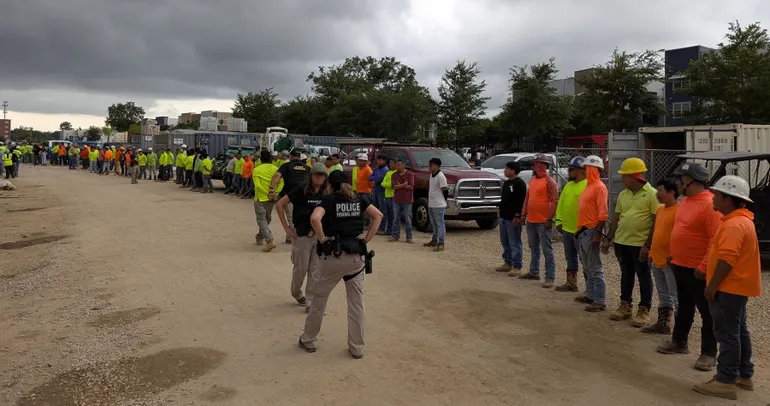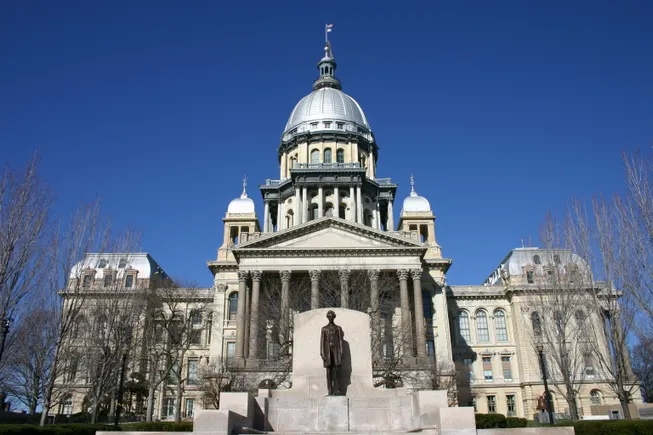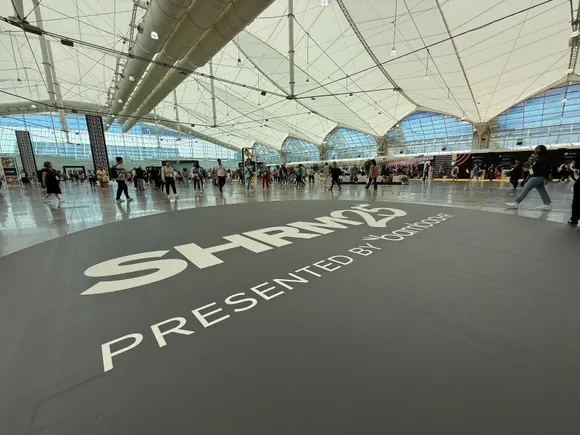President Donald Trump’s push to remove undocumented workers from industries across the country played out on several construction sites last week.
Immigration and Customs Enforcement officers arrested over 100 undocumented workers during a jobsite raid in Tallahassee, Florida, on May 29, the agency said in a news release.
Some of those workers were sent to Florida detention facilities and others were flown to El Paso, Texas, where they await removal, or are already in Mexico, the Tallahassee Democrat reported.
Others still are unaccounted for, at least by their families, who haven’t heard from them since the raid.
The Tallahassee arrests — carried out at a student housing development near the Florida State University campus, the Tennessee Democrat reported — was a multiagency operation, directed by ICE in partnership with several federal and state law enforcement agencies.
Hedrick Brothers, the West Palm Beach, Florida-based company overseeing the Tallahassee project, released a statement Tuesday, WCTV reported.
“Homeland Security’s actions were focused on a criminal investigation unrelated to Hedrick Brothers Construction or the Project,” the statement read. “To add, we had no foreknowledge whatsoever of this incident until it occurred.”
Also last week, ICE agents arrested several construction workers on a site on the University of San Antonio’s main campus, the San Antonio Express-News reported, though no specific numbers were given. In addition, ICE said it arrested 15 workers during a construction jobsite raid in New Orleans last week.
How to prepare
It’s tough to know exactly how many unauthorized workers there are in construction, though some estimations put the total number at around one-fifth of the labor force.
As a result, increased raids could bring severe disruptions to jobsites schedules, as well as exacerbate an already stark labor shortage, experts told Construction Dive.
“We have anticipated that it would take the Trump administration about five months to begin organizing jobsite enforcement activities, based on our understanding of the work involved in planning one,” said Brian Turmail, vice president of public affairs and workforce for the Associated General Contractors of America.
With May marking that five-month threshold, the contractor group had prepared its members.
“We have been advising our members to expect those kinds of enforcement efforts and have already hosted three webinars this year focusing on what contractors need to do to be prepared for a visit from ICE,” Turmail told Construction Dive in an email.
Associated Builders and Contractors, meanwhile, advises construction employers to work to ensure their employees have authorization to work in the U.S.
“ABC recommends every contractor take all precautions in the hiring process to verify each potential employee is eligible to work legally in the United States, including using the E-Verify system,” ABC CEO Michael Bellaman said in an email to Construction Dive.
Impact to jobsites
Jobsite raids foster uncertainty and fear, not just for workers whom the raids may target, but the employers, too, said George Carrillo, co-founder and CEO of the Hispanic Construction Council.
“These raids have far-reaching implications for the construction industry,” Carrillo said. “They disrupt projects, create uncertainty for businesses and foster fear among workers who simply want to do their jobs and support their families. Skilled workers are essential to our industry’s success, and these actions risk driving them away.”
For example, directly following the Tallahassee raid, some jobsites in Florida paused or shut down work for the day, the Tallahassee Democrat reported. The result of the raid could have a “chilling effect,” real estate experts told the Tallahassee Democrat.
“It is clear that the administration has gone beyond looking for undocumented workers who are engaged in additional criminal activities and/or national security threats,” Turmail said. “Should enforcement activities like what happened in Tallahassee become more common, it will quickly expose the many shortcomings in the current federal approach to workforce development for fields like construction.”
The Trump administration has pushed to remove undocumented immigrants in order to address what it calls threats to national security and as a way to protect jobs for those authorized to work in the U.S.
Labor woes
Construction leaders have called for immigration changes, specifically providing more pathways into the industry for legitimate employment.
“This moment calls for thoughtful dialogue and comprehensive solutions,” Carrillo said. “Instead of focusing on enforcement-heavy tactics, we should prioritize labor policies that address workforce shortages, provide pathways to legalization, and ensure stability for employers and employees alike.”
Bellaman said ABC has advocated for bipartisan solutions for the immigration system for over 20 years, and called for Congress to act and pass a market-based merit visa system to vet and approve foreign-born workers.
“Bipartisan solutions are needed to address our legal immigration workforce needs and disincentivize the drivers of illegal immigration into the United States,” Bellaman said. “ABC strongly believes that legal immigration reform is equally crucial for strengthening border security, fostering economic prosperity and providing high-demand industries, like construction, with solutions to workforce shortages.”
For years, the U.S. has underinvested in the trades as a career pathway and limited the number of routes for foreign-born workers to legitimately find employment in construction, Turmail said.
“In other words, our federal policy can be summed up as: ‘We don’t want our kids to work in construction, we don’t want to let people born in other countries lawfully enter the industry, we let a lot of undocumented people into the country and we want to build a lot of stuff,’” Turmail said. “We should not be surprised that undocumented workers are employed in this sector.”






Leave a Reply